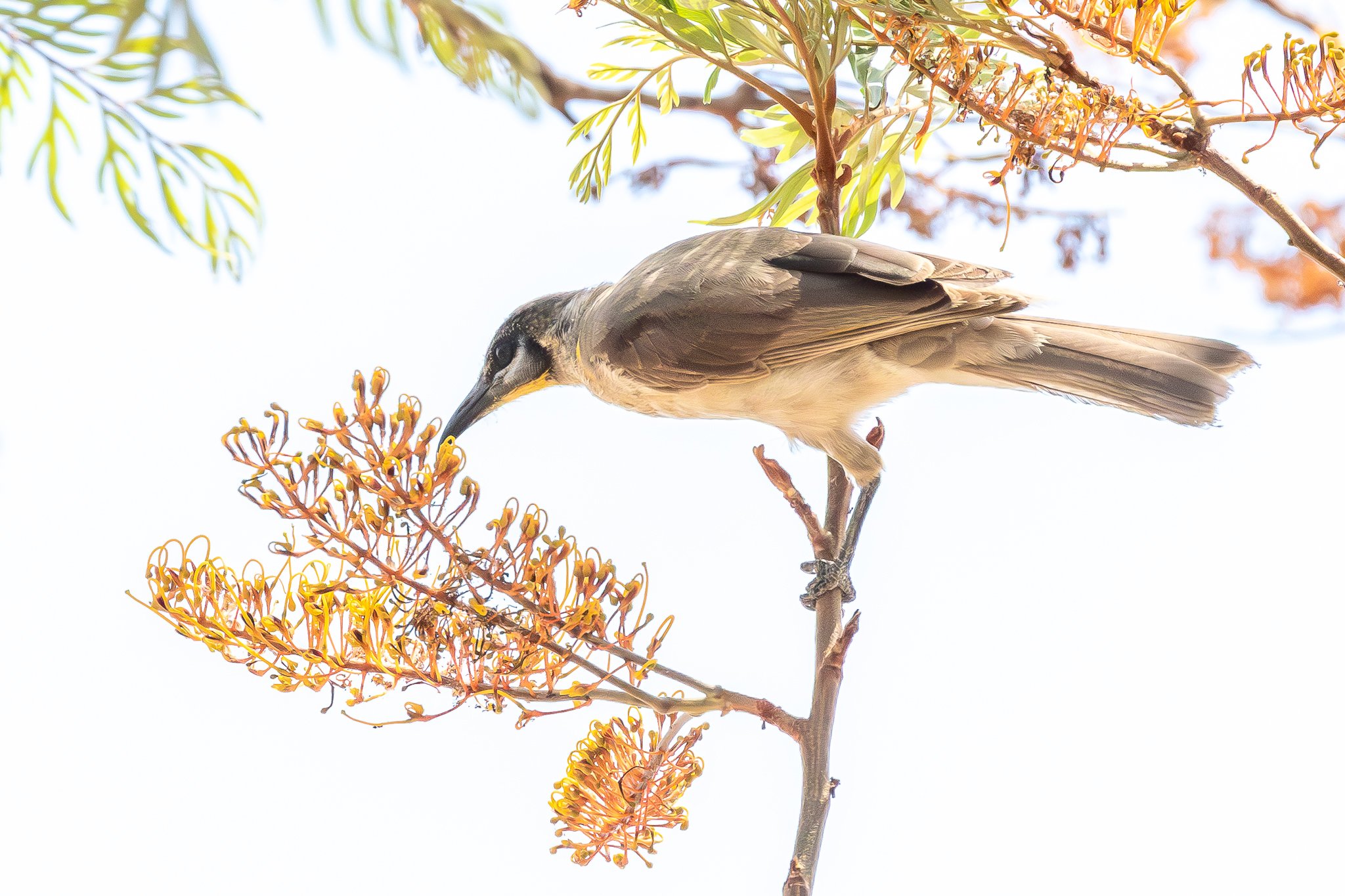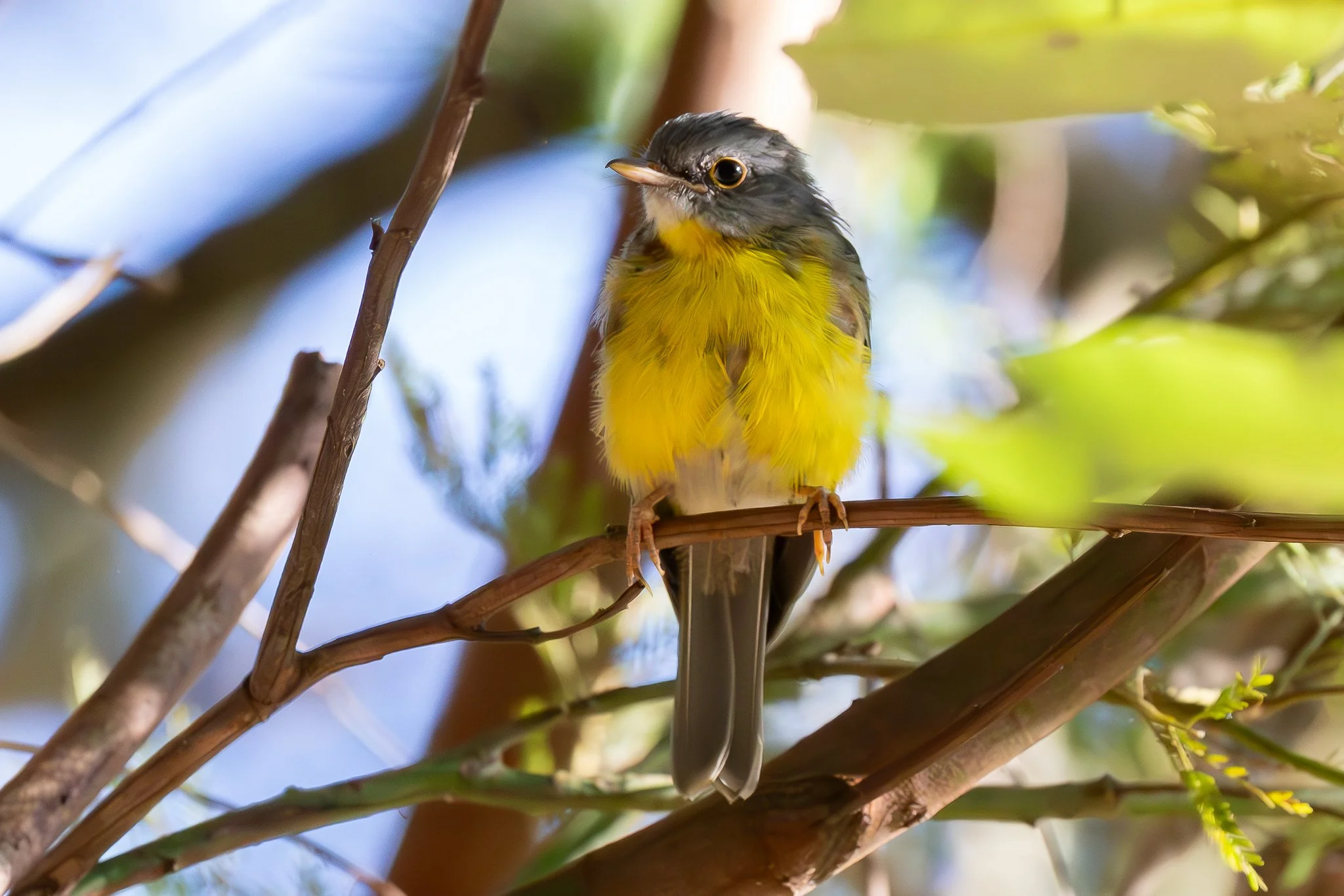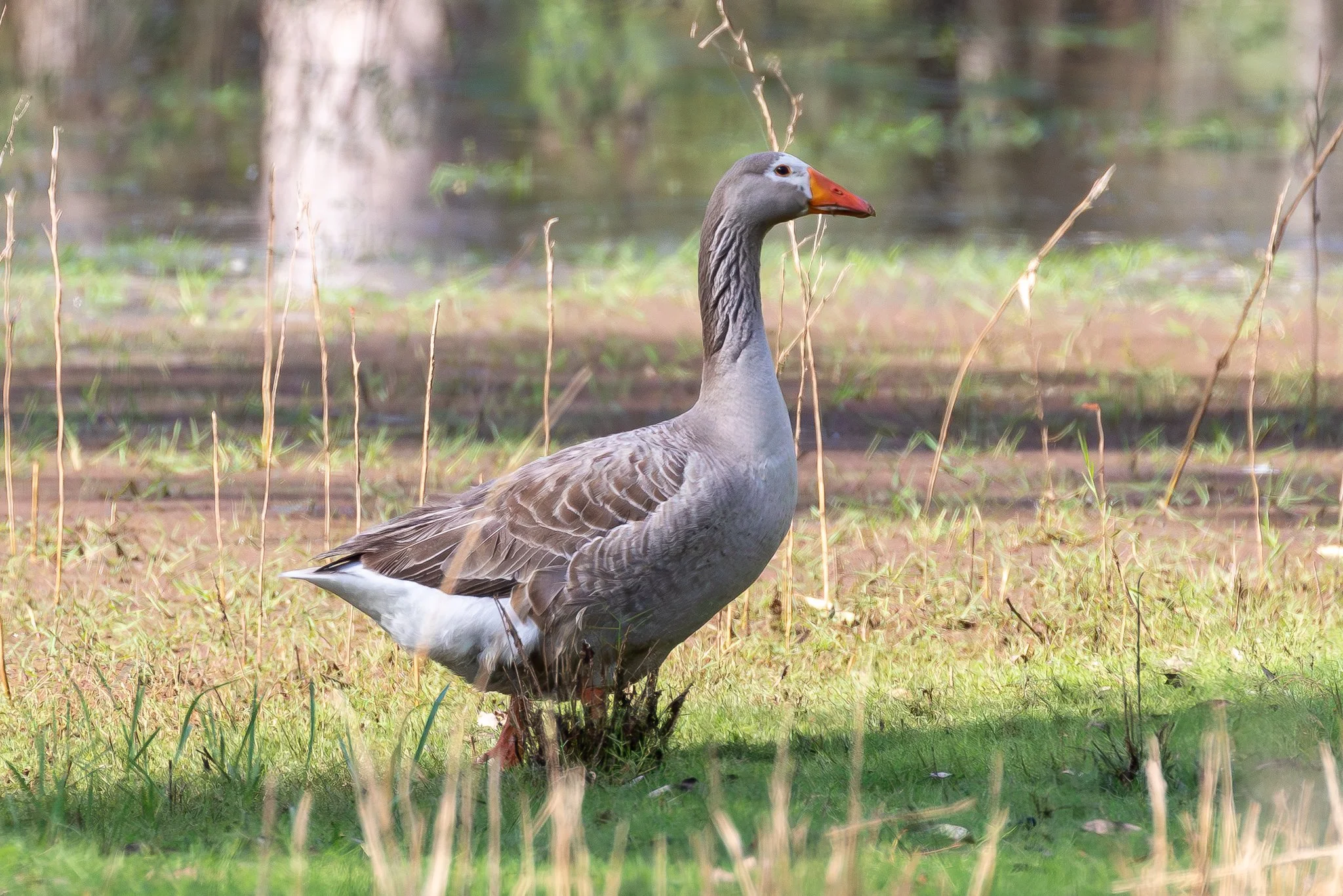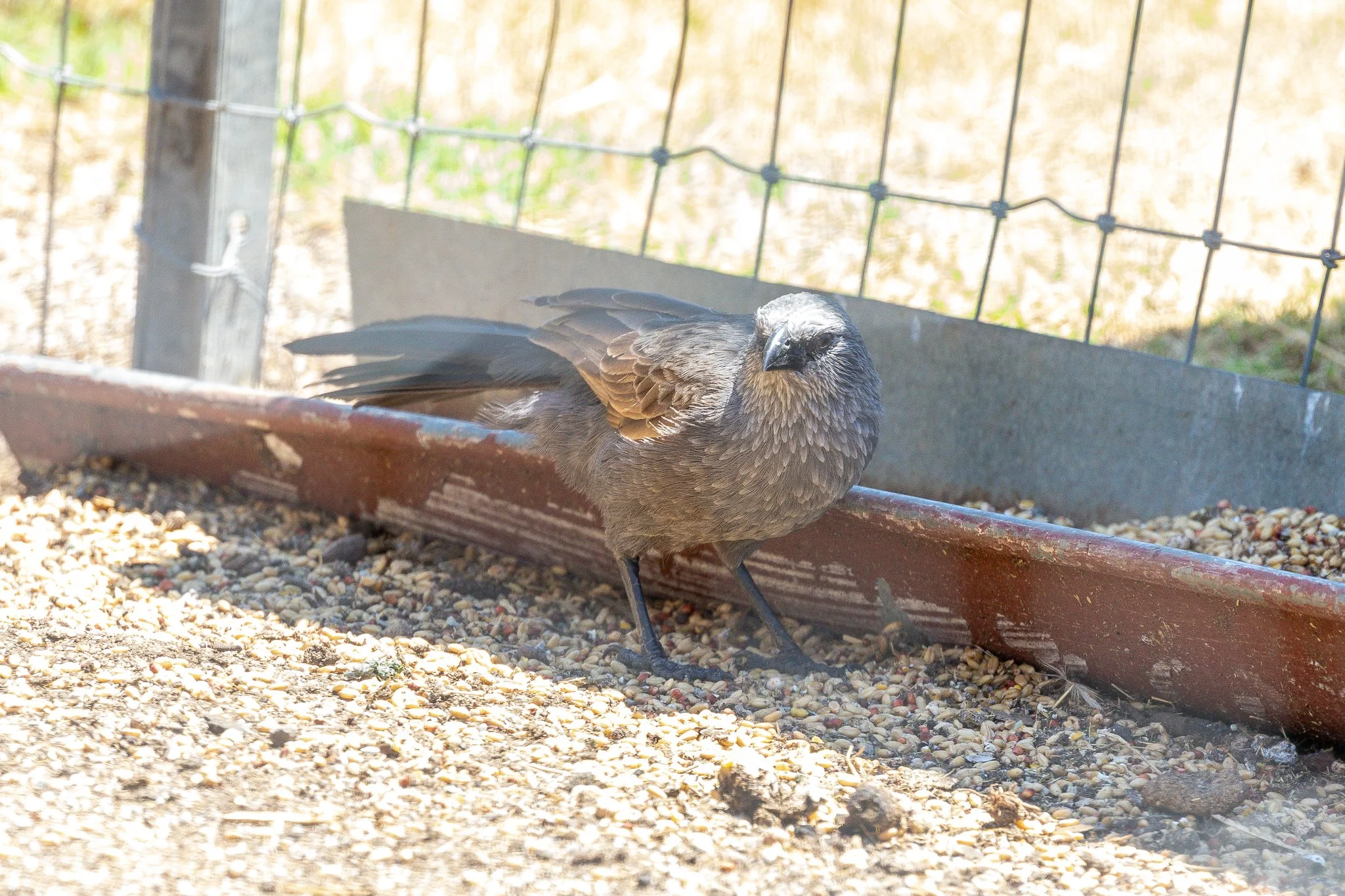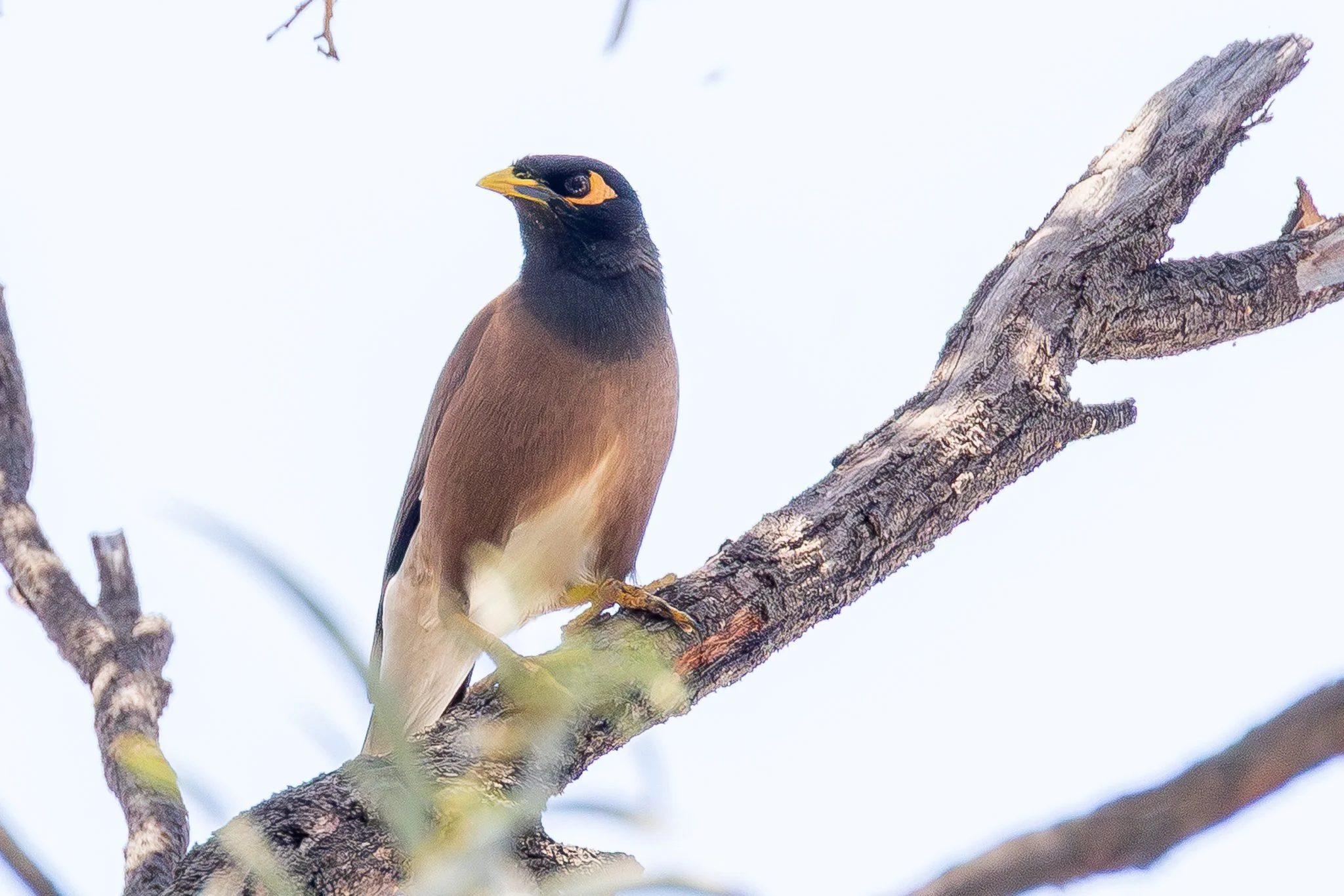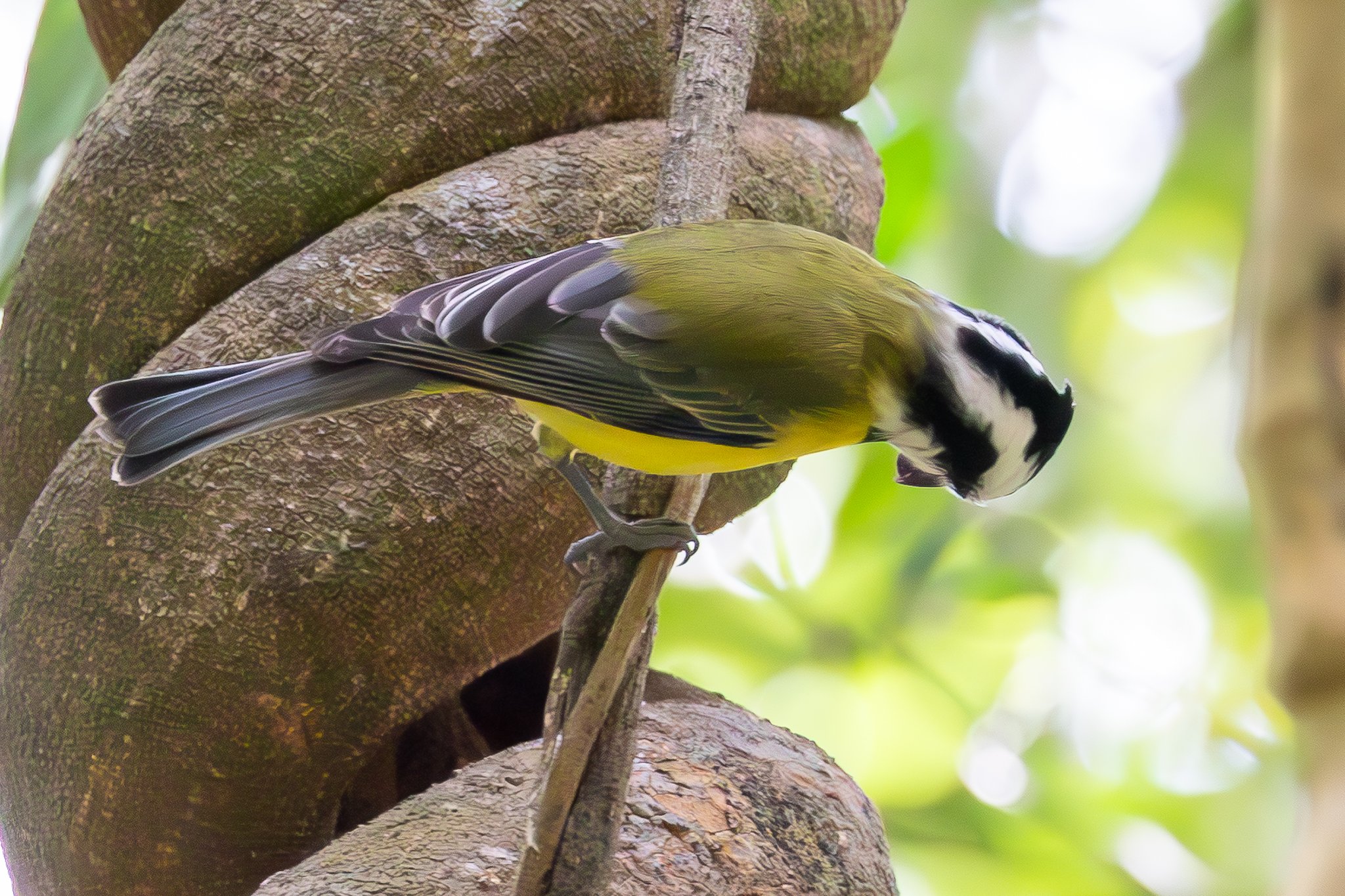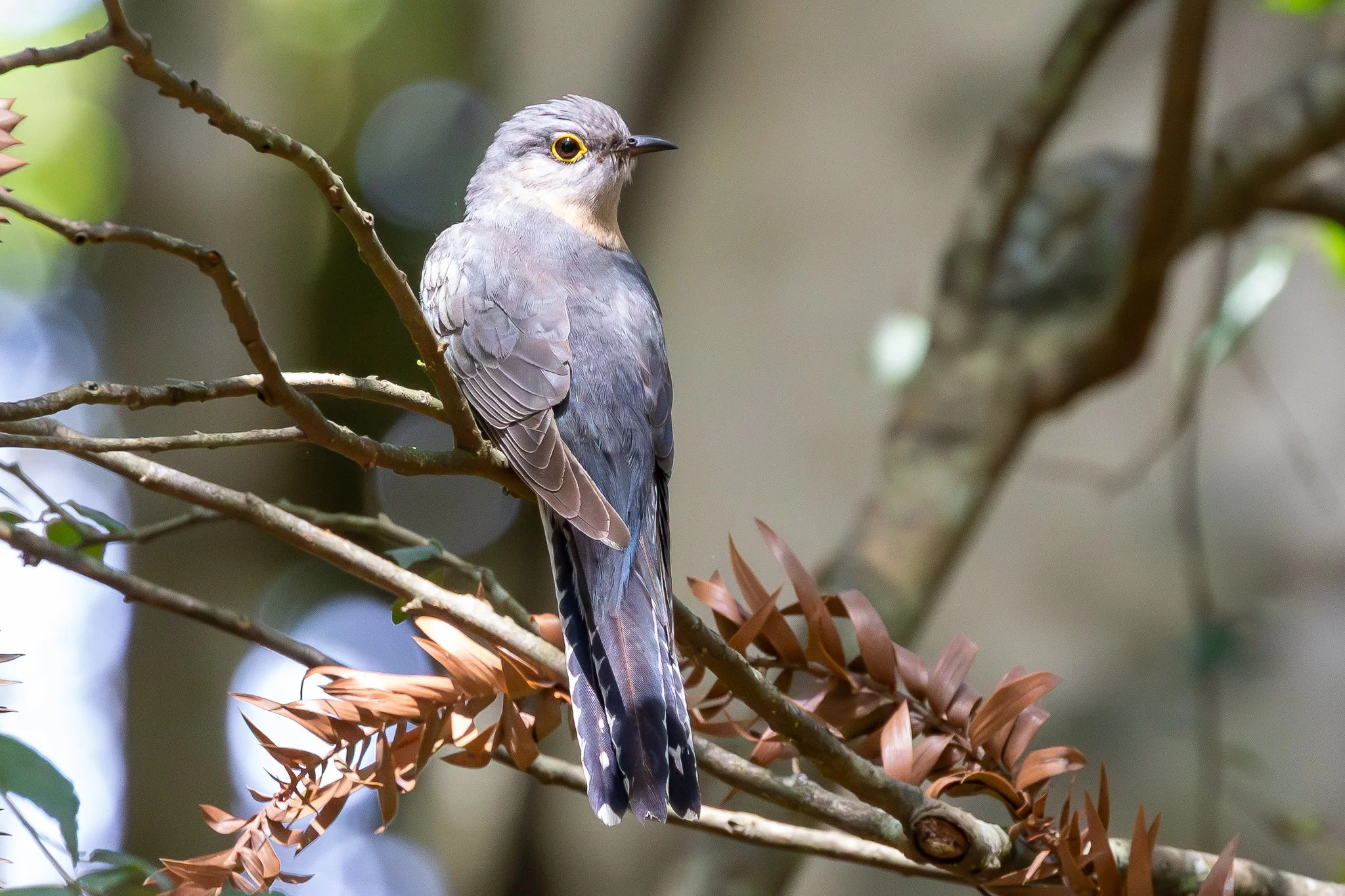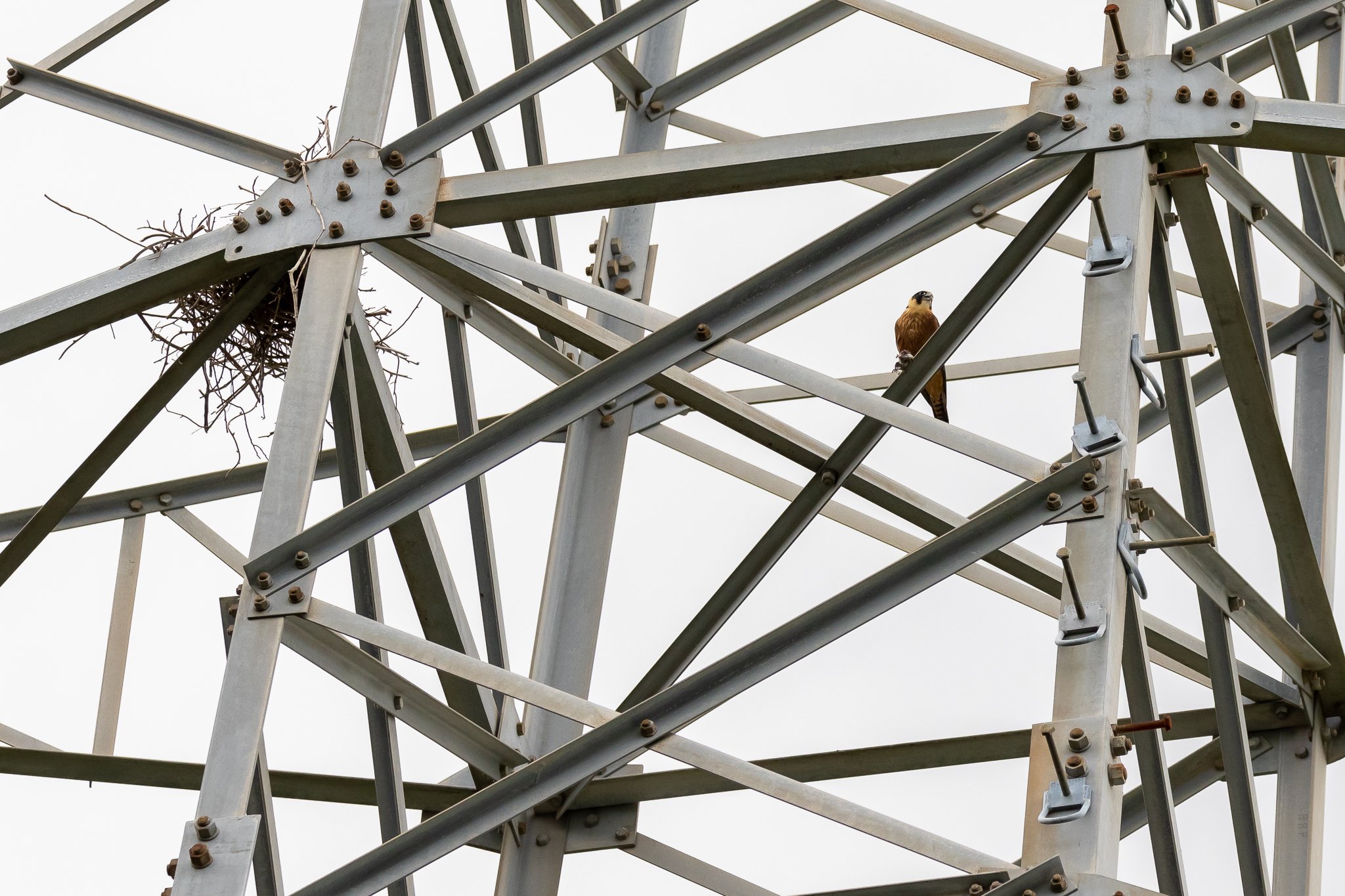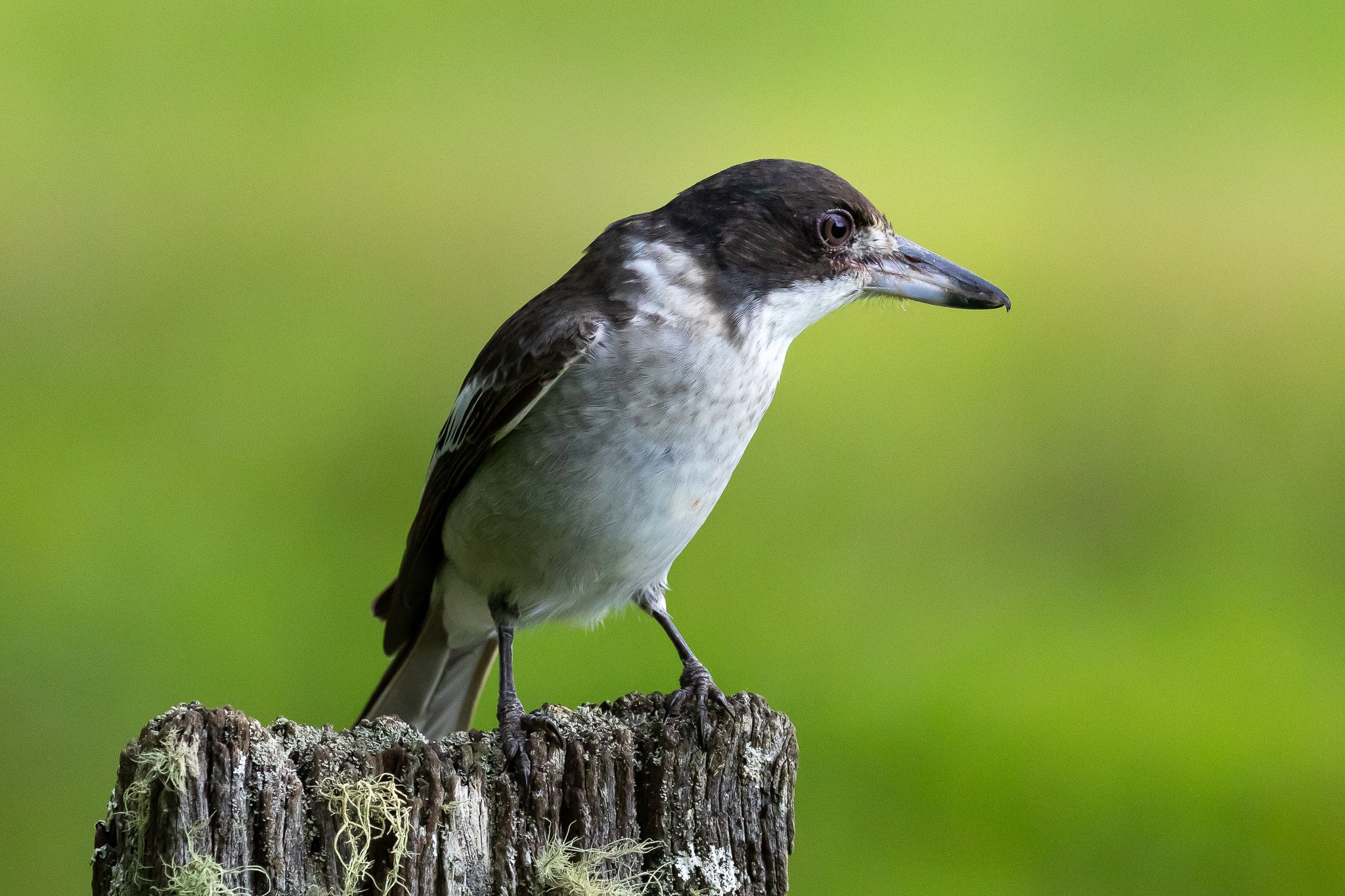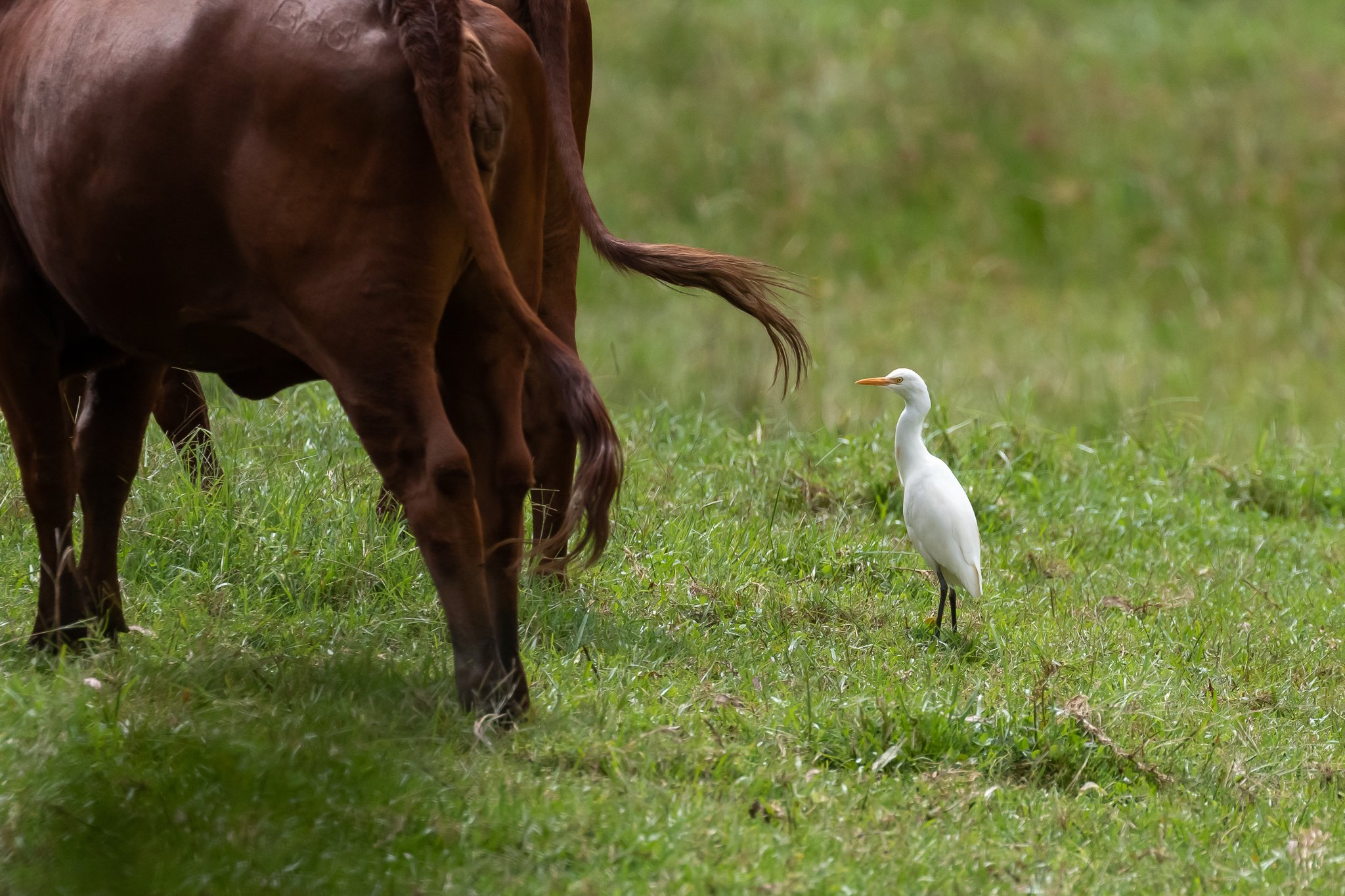Lake Wivenhoe is the largest lake in South East Queensland and provides more than half of the region's drinking water. The shoreline is mainly pasture with occasional scrub and trees. The lake attracts a variety of water and other bird species. The pictures below were taken at Hamon Cove Recreation Cove on the western side of the lake.
Water birds seen included Great Crested Grebes, Hardheads, Pacific Black Ducks, Darters, Little Pied and Little Black Cormorants.
Yellow-rumped Thornbills were active in the car park, along with Masked Lapwings, Magpies, Little Friarbirds, Noisy Friarbirds and Striped Honeyeaters. Red-backed Fairy-wren, Superb Fairy-wren and Tawny Grassbirds were plentiful in surrounding areas of long grass.
A Little Friarbird feeding in the car park at Hamon Cove Recreation Cove on Lake Wivenhoe.


